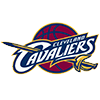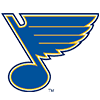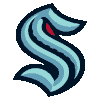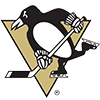Despite the much-ballyhooed addition of a second wild card - an addition that was supposed to shift the market drastically, creating more buyers than sellers - we still saw a whirlwind of trade action in the final week leading up to the July 31 non-waiver trade deadline. And, like most years, that means we see some significant fantasy names dealt to new cities and new situations, in some cases drastically altering their value.
Often the big impact comes from either the change in home park or the change from American to National League (or vice-versa), but there are other factors to note too: defense, lineup, and role, as examples. Let's take a look at some of this year's trade deadline winners and losers, in terms of fantasy values:
WINNERS
Zack Greinke, SP, ANA: Greinke is moving to the American League from the National League, true, but every other factor is in his favor. The Angels own one of the league's best lineups with a 107 wRC+, five points better than the Brewers. The Angels own the league's best defense by defensive efficiency, the Brewers are 28th. The Angels have a bullpen ERA nearly a run and a half better than the Brewers as well.
The likely result? Fantastic peripherals remain, meaning large strikeout numbers. The defense makes a big impact, as the Angels turn 3.9% more balls in play into outs than the Brewers, leading to a lower WHIP and ERA. The lineup and bullpen lead to more
Despite the much-ballyhooed addition of a second wild card - an addition that was supposed to shift the market drastically, creating more buyers than sellers - we still saw a whirlwind of trade action in the final week leading up to the July 31 non-waiver trade deadline. And, like most years, that means we see some significant fantasy names dealt to new cities and new situations, in some cases drastically altering their value.
Often the big impact comes from either the change in home park or the change from American to National League (or vice-versa), but there are other factors to note too: defense, lineup, and role, as examples. Let's take a look at some of this year's trade deadline winners and losers, in terms of fantasy values:
WINNERS
Zack Greinke, SP, ANA: Greinke is moving to the American League from the National League, true, but every other factor is in his favor. The Angels own one of the league's best lineups with a 107 wRC+, five points better than the Brewers. The Angels own the league's best defense by defensive efficiency, the Brewers are 28th. The Angels have a bullpen ERA nearly a run and a half better than the Brewers as well.
The likely result? Fantastic peripherals remain, meaning large strikeout numbers. The defense makes a big impact, as the Angels turn 3.9% more balls in play into outs than the Brewers, leading to a lower WHIP and ERA. The lineup and bullpen lead to more wins. In Greinke's case, the vastly superior supporting cast overrules the league change.
Hanley Ramirez, 3B, LAD: Much has been made about the size of Marlins Park. Unfortunately, there aren't good park factors readily available for the park since it's only been in use for half a season, but it compares shockingly well to Petco Park in terms of overall dimension. The warm, humid Miami air helps hitters out, but it's no hitters haven.
Neither is Dodger Stadium, but Chavez Ravine is not the great pitcher's park it was once considered. It has a 95 park factor for right-handers, just under the league average. And more important for Hanley, he's in the middle of the line behind two excellent hitters in Matt Kemp and Andre Ethier, which should be a huge boon for his RBI totals - the two have an aggregate OBP of nearly .800.
Geovany Soto, C, TEX: Soto is a sneaky add this season, particularly in keeper leagues. He's been heating up (.706 OPS) since returning from his knee injury and the move for Texas is a great one for hitters. The Rangers like to use Mike Napoli at first, particularly against left-handed pitching to get Mitch Moreland out of the lineup. And, of course, Texas is a fantastic hitters' park, with above-average factors for every possible event.
But the future value for Soto is that he's under team control for one more year whereas Napoli is a free agent, meaning Soto could be in line to start for the Rangers next season should he show his worth. Napoli will be one of the top free agents on the market - definitely at the catcher position - and could easily end up elsewhere.
LOSERS
Ryan Dempster, SP, TEX: Stop me if you've heard this one before: it's tough to pitch in Texas. It's not that Chicago is necessarily easy to pitch in either - it has a 104 factor on home runs, which is tough, but still shy of Texas's 109. Dempster was already giving up 1.2 home runs per nine innings in his home starts at Wrigley Field, too, and he'll be facing more hitters and better hitters due to the DH and the general quality of the American League.
In years past you could blame the Cubs' defense for issues, but they've been quality - both the Rangers and Cubs have top-12 defenses this season, so no change there. All isn't lost, though. Texas is going to win more often for Dempster than the Cubs, almost by default.
Shane Victorino, OF, LA: Victorino's usefulness - particularly in fantasy leagues - has been reduced to that of a platoon outfielder. He's hitting lefties exceptionally well, with a .316 average and five homers in just 98 at-bats. But he's tanking against righties, hitting just .242 with four homers in three times as many at-bats. Now Victorino goes to a park particularly tough on right-handed batters in LA, where every type of extra base hit has a below-average park factor, and he doesn't get much help as a lefty either.
The Dodgers will likely give him every chance to break out of his left-handed slump, but the park isn't going to give him any help from either side of the plate.
Francisco Liriano, SP, CHI-A: A move to the White Sox and U.S. Cellular Field is bad news for a pitcher. The Cell isn't as well known as, say, New Yankee Stadium or Great American Ballpark as a bandbox, but it has consistently had some of the highest home run park factors in recent years. According to FanGraphs last season, it was the easiest park for home runs for righties and fifth-easiest for lefties.
Again this year, the park factor for U.S. Cellular is some 30 points higher than the one for Target Field. The room for optimism? Liriano's strikeouts make him less susceptible to the home run because he allows so much less contact, and the White Sox have both a significantly better lineup and defense than the Twins, which could mitigate some of the damage.







































